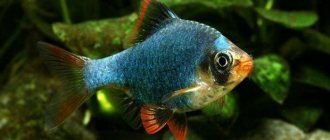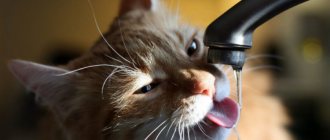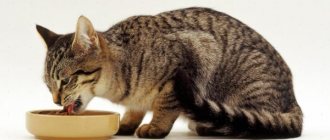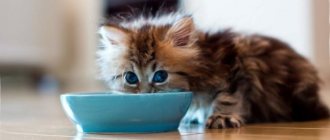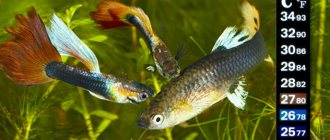How often should you feed?
So how many times a day should you feed your fish so that they are healthy and live long in the aquarium? The standard feeding scheme says: there should be as much food as the fish can eat in 3 to 5 minutes. The normal portion of food for an adult is 2–5% of its total body weight. As for the frequency of feeding, experienced aquarists believe that 1 – 2 feedings per day are enough.
A prerequisite: if the food has not been completely eaten, then its remains must be removed using a net so that they do not become a source of contamination of the aquarium. Remains of food should also be removed from the feeder.
Once a week, it is recommended to give the fish a fasting day: do not feed them for 24 hours so that their stomachs can be cleared of undigested food residues.
But such a shake-up should not coincide with any other stressful event: cleaning the aquarium, changing the water, etc.
Rule two: volume
Perhaps the shortest and most understandable scheme is the following: you need to give as much food as the fish eat in 5-10 minutes. Even the slowest breeds can eat during this time. This applies equally to:
- Live food;
- Dry food;
- Special additives (lettuce, cucumbers, heart, etc.).
After a maximum of 15 minutes, the remaining food (especially live food) must be removed. Don't expect the fish, like a house cat, to get hungry and eat later. Unfortunately, not all cats are ready to eat weathered food in a bowl; they ask for fresh food. Biological feed spoils very quickly in water. They immediately begin to release nitrites, which poison the water. At best, you will have to clean the aquarium weekly. At worst, the increased content of nitrogen compounds will make the aquarium a slow killer of your pets.
If you decide to get some too exotic fish, or are simply not confident in your knowledge, ask the seller how much to feed your new friend. This will eliminate mistakes and risks of losing pets.
How does the number of times depend on age?
The amount of food directly depends on the age of the inhabitants of the aquarium: if adult sexually mature individuals need one or two feedings per day, then fry (immature fish) need much more.
Since the fry need a lot of energy to grow, the amount of food required should be about 15% of the fry's total body weight. In other words, fry up to one month old are usually fed once every 3-5 hours , and fry 1-2 months old - 4-5 times a day. Fasting days are contraindicated for them.
Main types of feed
If everything became clear with frequency, then what to give them was not entirely clear. Aquarists use four types of food:
- Live food;
- Branded;
- Vegetable;
- Frozen.
It is ideal if you combine all types of feed. In this case, your fish will be healthy and will give you aesthetic pleasure with the play of its colors. It is possible that the fish will eat only plant foods or only protein foods; it all depends on the breed of aquarium inhabitants. In nature, some people choose a vegetarian lifestyle, while others don’t mind feasting on their own kind. But if you are sorting most of the fish, then it is better to use a mix of several feeds. As the main food, you can use purchased branded food, regularly delight the fish with live food and sometimes give plant food.
If you decide to follow this scheme, then pay great attention to the choice of branded food. It is better to give preference to well-known brands that have been on the market for many years and have been tested by experienced aquarists. This food is suitable for almost all fish. It is balanced and contains essential vitamins and microelements. You can find it at any pet store. Do not confuse branded food with dry food. Food consisting of dried daphnia, cyclops or gammarus is not the best food for the daily diet of your fish. It is not advisable to feed such food, because it is deficient in nutrients, is poorly digestible and, among other things, is an allergen for humans.
Feeding with live food is the most preferable option. The fish need to be given it regularly as additional feeding every other day. Just like humans, aquarium inhabitants love a variety of foods, so try to alternate foods whenever possible. The most common are tubifex, bloodworm and coretra. The only, but very significant, disadvantage is that this type of food is most often obtained in the natural environment, which means there is a possibility of introducing infection into your body of water. The best thing to do before feeding your fish is to freeze it. This method kills a number of harmful bacteria.
A distinguishing alternative to live food is frozen. Agree, not everyone can handle living worms in the refrigerator. For these, there is an alternative option - frozen worms. They are easy to dose, have a long shelf life, and contain a full range of vitamins. If you carefully study pet stores, you can find mixed species, where all three popular types of worms will be in one pack.
Plant foods are an integral part of the life of fish in the natural environment. For most fish, you will have to try and prepare green food. Of course, it’s stupid to feed predators grass, but the rest will happily feast on greens suitable for them. It is difficult to give general recommendations here, since different fish prefer different foods. There are several plant-based food options:
- Pills;
- Flakes;
- Branded;
- Natural.
Natural ones include cucumber, zucchini or cabbage. This feeding will allow you to enjoy your clean aquarium with healthy and beautiful fish. With proper feeding, the lifespan of the fish increases.
What should fish get from food?
An important question in terms of nutrition for aquarium fish is the question of the number of feedings per week and what the fish need to get in food? Here you need to focus on specific fish. The plans for omnivores, herbivores and carnivores look different, but in any case they should include everything you need. Let’s say that omnivores and carnivores can be fed dry food four times a week, live food once, and the fish left hungry for one day.
You can draw up a scheme yourself, the main thing is that all the nutritional requirements for aquarium fish of a specific age and size are taken into account. It is imperative to alternate different types of food: live, dry, vegetable. Remember, if the fish is a herbivore, then it should eat accordingly - only dry food or plant food.
Fish need a fortified diet that will allow them to live fully. When buying store-bought food, pay attention to the composition. It should contain all the vitamins and minerals necessary for aquarium inhabitants:
- Vitamin A. This vitamin is more needed by fry; if the fish do not have enough of it, they will not grow well. Possible deformation of the spine and fins. In addition, the fish will be under stress.
- Vitamin E. Fish need it for reproduction, as the vitamin affects reproductive function.
- Vitamin D. Thanks to this vitamin, fish develop their skeletal system during growth.
- Vitamins B1, B2, B12. are responsible for metabolic processes in the body.
- Vitamin C. Necessary during the formation of teeth and bones, and also helps strengthen the immune system and normalize metabolic processes.
- Vitamin H. Thanks to it, cells are formed correctly during the growth of the fish.
- Vitamin K. It is necessary for the body of the aquarium inhabitant for such important processes as protein synthesis. This fat-soluble vitamin is responsible for blood clotting.
- Vitamin M. The color of the scales becomes better if the fish’s food contains that vitamin, which is also called folic acid. In addition, vitamin M improves immunity and the functioning of the circulatory system.
- Vitamin B4. Responsible for the growth of fish, controls blood sugar levels.
By following all the rules for feeding aquarium fish, you will never overfeed them. And thanks to nutritious food, the fish will be healthy, beautiful and active.
Other interesting articles
- Varieties of aquarium fish The number of varieties of aquarium fish is in the thousands, and each of them has its own characteristics. Agile and...
- How many years do fish live? One of the most important questions that concerns any aquarist is how many years do aquarium fish live? Answer…
- Aquarium fish-predators Most aquarium fish lovers prefer herbivorous species. They do not require special care, almost never...
What happens if you underfeed?
The basic principle of feeding fish in an aquarium is: it is better to underfeed than to overfeed.
It is believed that a healthy adult fish can go without food for up to several weeks. However, you should not experiment, it can lead to unpleasant consequences. From rare and meager feeding, fish lose weight , their abdomens become sunken, and their backs dry out. It may all end with larger individuals starting to attack smaller ones and simply eating them.
The only exception to systematic feeding is the spawning period. The feeding pattern of the fish at this time should look like this: two weeks before spawning, they need to be well fed, especially with food of live origin, but during the spawning period the amount of food can be reduced. Experienced aquarists do not give them food at all for several days.
What happens if you overfeed?
Under natural conditions, a fish must make a lot of effort to fill its stomach. In an artificial reservoir, including an aquarium, abundant food is supplied systematically, and the fish does not have to waste time and effort searching for it.
As a result , the fish, by nature a rather voracious creature , tries to eat all the food, and, as a result, begins to suffer from obesity; this disease immediately entails another one - infertility. The ending may be even more dire: the fish may die because their stomachs cannot digest the large volume of food they eat.
In addition, when overfeeding, food residues fall to the bottom of the aquarium, into the soil, and, decomposing, spoil the water: it becomes cloudy due to the rapid proliferation of microorganisms and turns into an ideal environment for various infections. Also, during the decomposition of microorganisms in water, oxygen is absorbed, and ammonia and nitrates are released, which can poison fish and plants.
During vacation
If you leave the aquarium unattended for a couple of weeks, then use special food and automatic feeders with a dispenser. Briquette and capsule feeds dissolve slowly in water, providing nutrition for a long time. If feeding fish during absence is entrusted to friends, tell them about how to care for aquarium inhabitants. You can package the food into equal parts to eliminate the risk of overfeeding and give the necessary advice.
With proper feeding, fish are protected from diseases. Healthy fish live longer, have bright colors and are agile.
WHAT FOOD IS BEST FOR FISH?
HOW TO PREPARATE ARTIFICIAL FOOD FOR AQUARIUM FISH?
AULOFORUS - CULTIVATION AT HOME
HOW SHOULD YOU FEED A FRY?
DRY FOOD FOR AQUARIUM FISH - STORAGE TYPES SELECTION DESCRIPTION.
What to feed
The choice of food for aquarium pets today is huge and is not limited only to dry mixtures. Each aquarist chooses for himself what is more convenient for him and with what feeding the fish feel most comfortable. And in order for your choice to be as accurate as possible, let's look at the food in detail.
Industrial feed
Industrial food for goldfish is very widely represented on the market; the manufacturer Tetra alone has more than 10 types! The average cost of this brand of feed is about 250 rubles per 250 grams of feed. In addition, high-quality balanced breed food for goldfish is produced by the following brands: JLB, Sera, Tropical, Zoomir and some others.
Let's look at the feed according to release form:
- Flakes (Tetra Goldfish Pro, Tetra Goldfish, Tetra Goldfish Color, Zoomir for goldfish, Sera Goldy, etc.). Each of the listed foods positions itself as a complete and balanced diet for daily feeding; many have their own specific features. But the general quality of all flakes is an improvement in color.
- Granules and sticks (JBL GoldPearls, TetraGoldfishGranules, Tetra Goldfish Weekend, Tetra Goldfish Gold Colour, TetraGoldfishGoldJapan, Sera Goldy Color Spirulina, Sera goldy Gran, etc.). Granules compare favorably with other feeds in that they remain on the surface of the water longer , which means the owner can remove excess feed in a timely manner.
- TetraGoldfishMenu – I describe it separately because This food includes different fractions : flakes, granules, chips and dried daphnia. In my opinion, one of the best foods on the market.
- Food for the weekend . An interesting product that appeared on the market not so long ago. It is represented by the JLB and Tetra brands. I’ll immediately make a reservation that before using it offline, test it under your own control, because... There are both positive and sharply negative product reviews! JBL Holiday Red and Tetra Goldfish Holiday are a “tablet” that can not dissolve in water for up to 2 weeks, while feeding the fish in small portions. An interesting new product that is undoubtedly necessary for modern aquarists.
The average price for such food during the holidays is 200 rubles.
When choosing food, rely on your own convenience, the condition of the fish and the water. The abundance of food is great, which means everyone can find their ideal industrial food for goldfish. Be it premium or economy segment.
Live food
Live food for goldfish is, first of all, a delicacy, because fish need both plant and animal components. Overfeeding one type of food or another can lead to illness and death of your pet.
- Vegetable food - primarily duckweed and richia, but other small-leaved plants with a soft structure are also suitable. To prevent the fish from overeating and completely destroying the entire plant colony, it is better to have a separate herbalist from which to feed goldfish from time to time.
If this is not possible, the fish will happily enjoy spinach, cucumber, lettuce and even broccoli, previously scalded in boiling water.
Golden ones are absolutely omnivorous!
Feeding with plant food cannot replace a full diet, so it is recommended to do it no more than 3 times a week.
- Live food of animal origin. They stimulate both rapid growth and rapid obesity. There is no need to please adult fish with such a high-calorie lunch more than once a week. Goldfish especially love: daphnia, bloodworms, tubifex and coretra. But juveniles can be fed with live food every day.
DIY feed
Do-it-yourself food for fish is, in my opinion, not the most convenient way to organize nutrition. However, many breeders today consider it the most correct. So, they prepare minced fish from seafood, vegetables or beef heart and freeze it in small portions. The size of each portion is equal to one feeding because... re-freezing is not allowed! To make the process convenient, use ice molds, containers for medicines, eggs, and chocolates.
Food based on minced beef heart with agar-agar and vitamins.
A simple DIY recipe for goldfish food based on beef heart
Boil the heart for 2 hours over medium heat, without spices or salt! It is advisable to remove the foam. Cool it and grate it on a fine grater. Once cooled completely, divide into portions and freeze. Beef heart food is ready!
Use cereals and bread in feeding with caution; they can not only cause indigestion, but also definitely spoil the water in the aquarium! Although they eat this golden food with joy.


